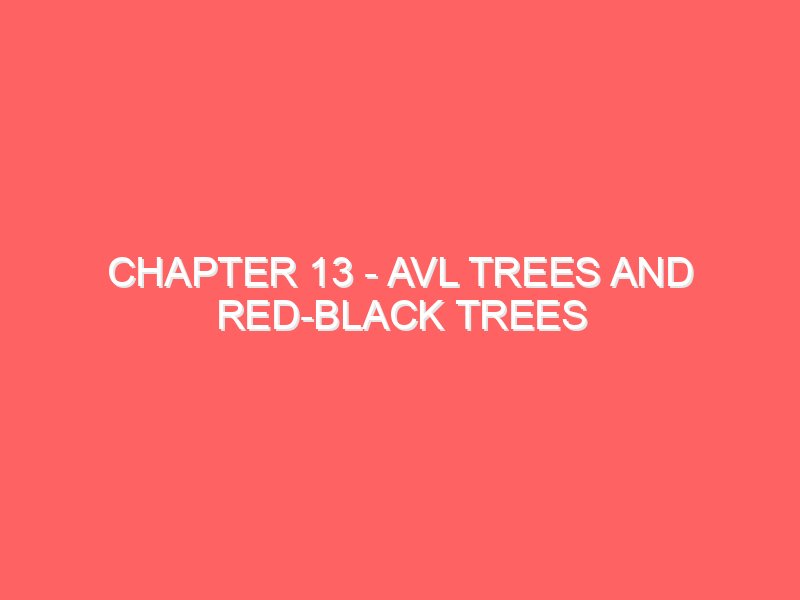
Chapter 13 – AVL Trees and Red-Black Trees
Chapter 13: AVL Trees and Red-Black Trees In this chapter, we will dive into AVL Trees and Red-Black Trees, two important types of self-balancing binary search trees. These trees ensure that the height of the tree remains balanced, providing improved efficiency for operations such as insertion, deletion, and searching. Self-balancing trees like AVL Trees and…

Chapter 12 – Binary Trees and Binary Search Trees (BST)
Chapter 12: Binary Trees and Binary Search Trees (BST) Welcome to the fascinating world of Trees! Trees are one of the most fundamental data structures in computer science, and they are widely used in various applications like file systems, databases, and more. This chapter focuses on two essential types of trees: Binary Trees and Binary…

Chapter 11 – Deques (Double-Ended Queues)
Chapter 11: Deques (Double-Ended Queues) Welcome to Chapter 11! In this chapter, we’ll explore Deques, or Double-Ended Queues, an interesting and versatile data structure that extends the concept of a standard queue by allowing insertion and deletion at both ends. This concept will help you understand more advanced applications of queues and solve real-life problems…

Chapter 10 – Priority Queues
Chapter 10: Priority Queues Welcome to Chapter 10! In this chapter, we’ll explore Priority Queues, a special type of queue where elements are processed based on their priority rather than the order in which they were added. Priority queues are incredibly useful in various real-world applications, such as task scheduling, Dijkstra’s shortest path algorithm, and…

Chapter 9 – Circular Queues
Chapter 9: Circular Queues Welcome to Chapter 9! In this chapter, we’ll explore Circular Queues, which are an extension of the basic queue structure. Circular queues optimize memory usage by reusing spaces that are freed when elements are dequeued. This makes them highly useful for scenarios with fixed-size buffers, like operating systems and network packet…

Chapter 8 – Queues
Chapter 8: Queues Welcome to Chapter 8! In this chapter, we’ll explore Queues, another fundamental data structure that follows the First-In-First-Out (FIFO) principle. Queues are widely used in various computing scenarios like task scheduling, resource management, and buffering. What is a Queue? A Queue is a linear data structure where elements are inserted at the…

Chapter 7 – Stacks
Chapter 7: Stacks Welcome to Chapter 7! In this chapter, we will delve deeply into the concept of Stacks, a fundamental data structure with a Last-In-First-Out (LIFO) ordering principle. Understanding stacks will equip you with a solid foundation for tackling a range of computational problems and algorithms. What is a Stack? A Stack is a…

Chapter 6 – Circular Linked Lists
Chapter 6: Circular Linked Lists Welcome to Chapter 6! In this chapter, we will explore Circular Linked Lists, a variation of linked lists where the last node in the list points back to the first node, forming a circular structure. This type of linked list is particularly useful in scenarios where you need a continuous…

Chapter 4 – Linked Lists
Chapter 4: Linked Lists Welcome to Chapter 4! Now that you’ve become familiar with pointers and dynamic memory allocation, it’s time to explore how pointers unlock one of the most fundamental and powerful data structures: Linked Lists. If you’ve ever worked with arrays and found their fixed size to be limiting, you’re going to love…

Chapter 5 – Doubly Linked Lists
Chapter 5: Doubly Linked Lists Welcome to Chapter 5! In this chapter, we’ll explore the Doubly Linked List—a more versatile type of linked list compared to the singly linked list. If you think of singly linked lists as one-way streets, doubly linked lists are like multi-lane roads with traffic flowing in both directions. This added…










